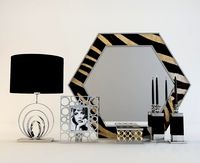
Expandable libraries offer the ability to add additional interest. Each element may also be assigned a material containing color and reflective properties. Fill tiles can also be used, allowing you to create your own fills. Fills can be applied to both 2D and 3D elements. 2D and 3D tools and parametersĭrawings can be rendered using fills and materials. The “Fusion” processĪn exclusive “fusion” process immediately joins the various wall elements, as they are placed, moved or changed, allowing a quick and easy creation of the initial drawing. Importing of the most part of the graphic formats: TIFF, JPG, PICT, GIF, TGA, BMP, PNG and many others. The reverse operation may also be performed: an architectural model may be exported to DomusTerra or Nonio C (in 3DS and QD3D MetaFile format) where it can be placed directly on the modeled landscape. A land model created with DomusTerra, Nonio C, or other modeling programs can be imported by Domus.Cad, where it may be viewed and elaborated along with the architectural model. The model created with Domus.Cad can be exported in 3DS format and other formats including Art*lantis, DXF 3D and DWG. One of the most important feacture of Domus.Cad Pro and Std is the new vectorial rendering engine, that allows the user to obtain editable elevations, sections, perspectives, axonometries and in a way as the interactive 3D view, generating high quality and very detailed drawings, colored with the same colors as the interactive 3D view. You can directly edit the 3D model elements in the 3D Window. Domus.Cad also allows you to simulate different lighting conditions and do walkthroughs in real time, a definite plus for helping the client understand 3D architectural space.

You can keep the 3D window open while you design in plan and watch the model change in real time as you draw. Interactive 3D and walkthroughsĭomus.Cad offers true interactive design capabilities. Uncomplicated procedures of element insertion, movement, and modification allow you to progress easily through all phases of the design process. Easy to learnĭomus.Cad is intuitive and easy to learn.

Elements such as walls, floors, roofs, and stairs are created from the onset in their full three-dimensional form.

With Domus.Cad you can immediately begin to create three-dimensional elements without needing to start from a two-dimensional plan.


 0 kommentar(er)
0 kommentar(er)
